What will new energy vehicles evolve into in five to ten years?
Ten years ago, when people mentioned new energy vehicles, they often thought of bulky battery packs, an actual range of less than 200 kilometers, lengthy charging waits, and the underlying concerns from news about "spontaneous combustion."
Five years ago, new energy vehicles were still considered "unfinished products." The increase in range figures did not alleviate the anxiety of car owners. However, the waves of technology such as supercharging networks, solid-state batteries, and smart driving have propelled new energy vehicles to the center stage of China's automotive industry.
Today, in an autonomous driving test area in Beijing's Yizhuang, a prototype car without a steering wheel is cruising at a speed of 60 kilometers per hour. The lidar on the roof silently rotates, while a projector inside the car displays meeting documents between the seats. The battery management system converts the remaining power into carbon credits, which are shown on the window glass...
This is not a science fiction scenario, but a realistic snapshot of the evolution of China's new energy vehicle industry towards 2030.
When global sales of new energy vehicles surpass the 25 million mark, and Chinese brands dominate the market with a 60% global share, when the range of new energy vehicles exceeds 800 kilometers, and a 10-minute charge provides a range of 400 kilometers, when new energy vehicles transition from the first half of electrification to the second half of intelligence, with autonomous driving systems, vehicle networking technology, energy management, and optimization continuously disrupting our understanding, the technological fission of new energy reaches a critical point.
In the next five to ten years, this electricity-driven, AI-empowered new energy revolution will lead new energy vehicles to what destination? How will humans reconstruct their relationship with intelligent mobile spaces?
Paradigm Shift in Energy Systems: From "Charging Anxiety" to "Mobile Power Stations"
If the current pain points of new energy vehicles are range and energy replenishment, then the core breakthroughs in the next ten years will completely overturn the energy logic.
The commercialization of solid-state battery technology is advancing at an unexpectedly rapid pace. Companies like CATL and Toyota are mass-producing solid-state batteries with an energy density expected to exceed 500Wh/kg, enabling a range of 800 kilometers with a 10-minute charge. However, the true transformation is anticipated to occur in 2030: the maturation of sodium-ion and lithium-sulfur batteries will lead to a 50% cost reduction, and vehicles themselves will become nodes in a distributed energy network.
The pilot project in Changzhou, Jiangsu, has begun to take shape. When the solar panel-covered highway noise barriers are combined with piezoelectric materials on the road surface, and coordinated with an intelligent grid dispatch system, electric vehicles can obtain energy through wireless charging while driving.
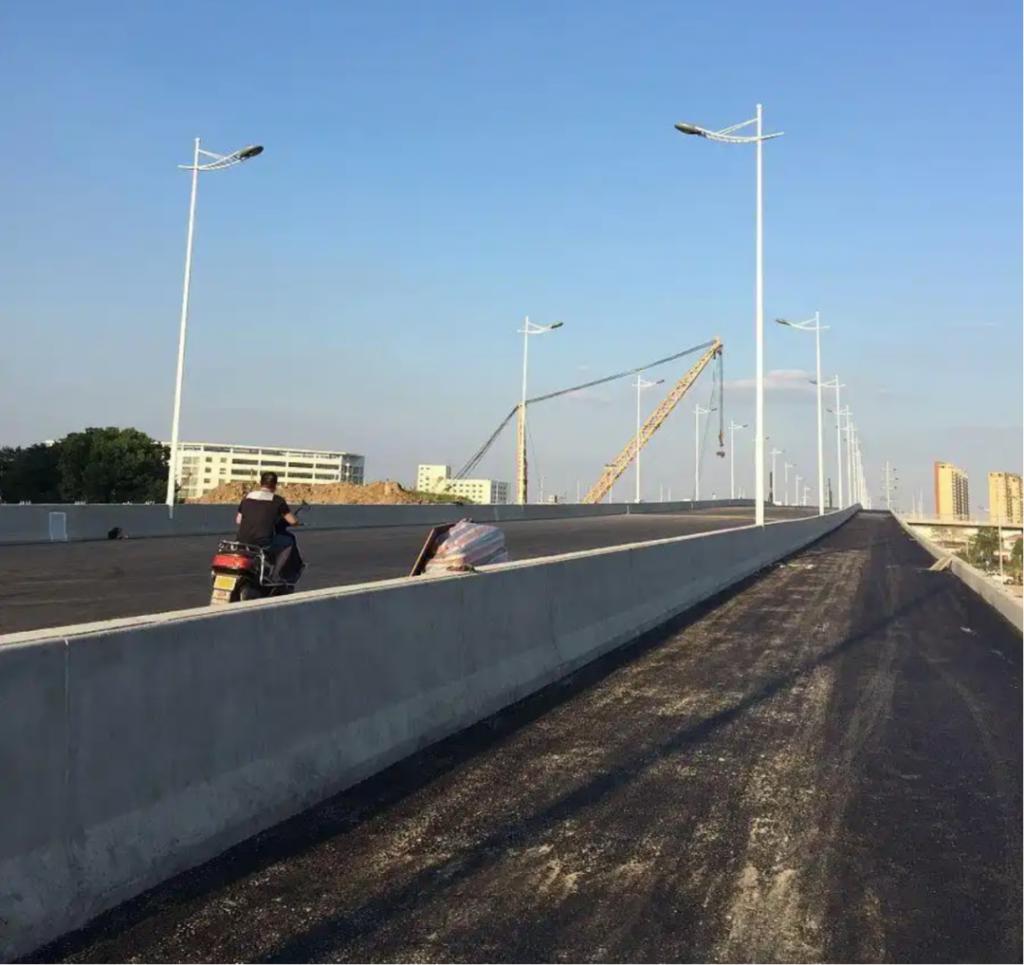
Image / Photovoltaic highway pilot section in Changzhou, Jiangsu / Source: Internet, screenshot from New Energy Observer
The more revolutionary aspect is the popularization of V2G (Vehicle-to-Grid) technology. Trial data from Beijing Yizhuang indicates that 1,000 new energy vehicles equipped with 80kWh batteries can provide peak shaving capability equivalent to a small pumped-storage power station. In the future, car owners can charge during off-peak electricity hours and sell electricity to the grid during peak hours, with annual earnings potentially covering vehicle insurance costs.
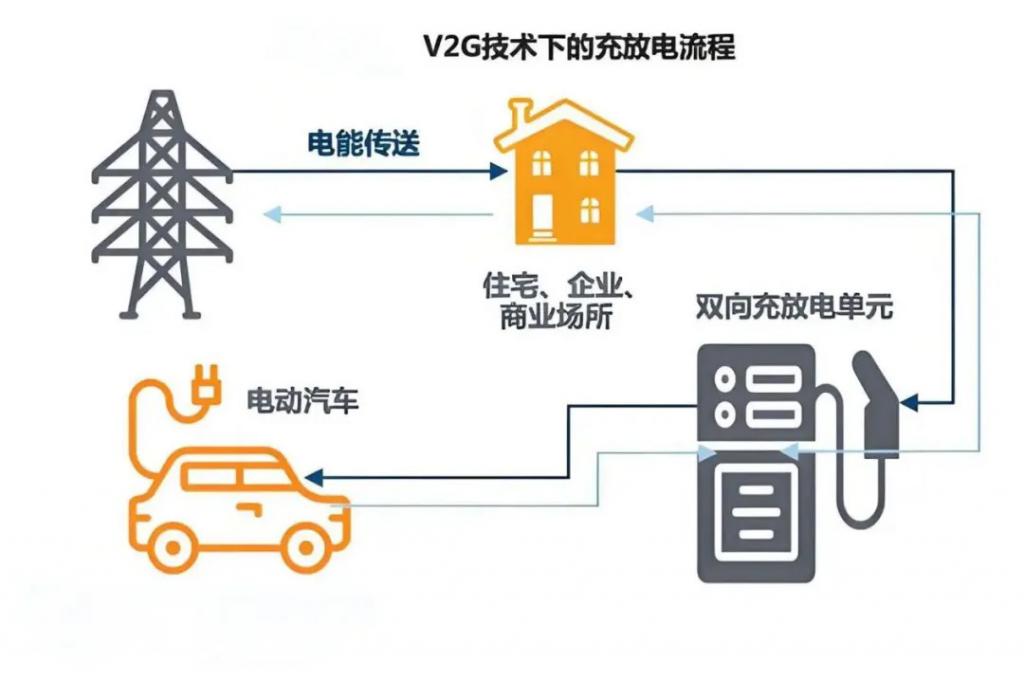
Diagram / V2G Charging and Discharging Process Source / Internet Screenshot of New Energy View
The Ministry of Transport's plan clearly indicates that by 2035, "pure electric vehicles will become the mainstream of new vehicle sales, and new energy heavy-duty trucks will be scaled up in application." This means that heavy-duty trucks will be equipped with megawatt-hour level battery packs, and their ability to provide reverse power supply during transportation will be sufficient to support temporary medical stations or disaster relief command centers in remote areas.
Deconstruction of Mechanical Carriers: From "Steel Shells" to "Evolvable Life Forms"
The "mechanical definition" with a century-old automobile manufacturing logic has already crossed the chasm of "hardware definition" and entered the intelligent era of "software and hardware co-definition." The "steel body" will also transcend the "software definition" and enter the "AI definition" era.
The attributes of traditional cars as mechanical products are disintegrating. A model from a new emerging force, set to be released in 2028, will be the first to use a 4D printed chassis, with self-healing materials that can restore structural strength within 72 hours after a collision.
The more profound transformation lies in the subversion of production logic: Geely's modular platform in development allows users to replace battery packs, drive motors, and even cabin modules like assembling Lego, shifting the vehicle's lifespan from physical scrapping to functional iteration.
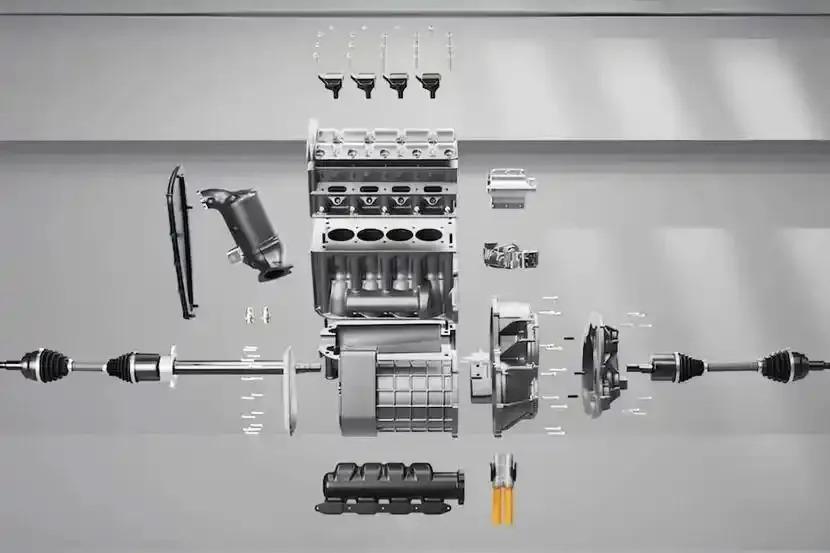
Image / Modular Power Unit Source / Internet Screenshot by New Energy View
The revolution in materials is equally astonishing. The controversy caused by Tesla's one-piece casting technology will be resolved in five years by carbon fiber-liquid metal composite materials. This new material automatically adjusts its rigidity in environments ranging from -30°C to 80°C, achieving a breakthrough in vehicle body lightweighting by over 60%.
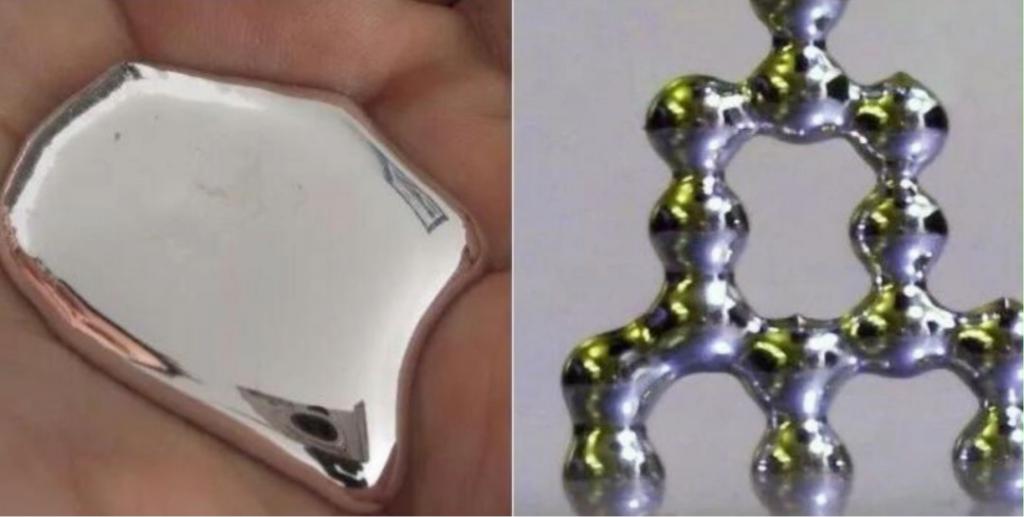
Image / Liquid Metal Composite Material Preparation Process Source / Internet New Energy View Screenshot
When lightweight construction is combined with aerodynamics, vehicles with a drag coefficient below 0.15 will become widespread, and the mileage per kilowatt-hour will increase from the current 7 kilometers to 12 kilometers. The issue of maintenance costs that once plagued the industry has been resolved with the proliferation of self-diagnostic chips and 3D printing repair stations. A pilot program in a mining area in Shanxi shows that mining trucks equipped with nanosensors can predict component wear two weeks in advance, automatically order replacement parts, and navigate to the nearest mobile printing workshop, reducing major repair times by 90%.
The Elevation of Intelligent Interaction: From "Driving Tools" to "Space Robots"
As the adoption of new energy vehicles accelerates, a competition centered around intelligent interactive experiences is quietly intensifying. Its profound impact is gradually dissolving the boundaries between machines and living spaces. The automobile, once merely a means of transportation, is evolving into a mobile living platform that integrates cutting-edge technology and humanistic care.
When the computing power of NVIDIA's Thor chip surpasses 2000 TOPS, the boundaries between intelligent cockpits and autonomous driving begin to blur.
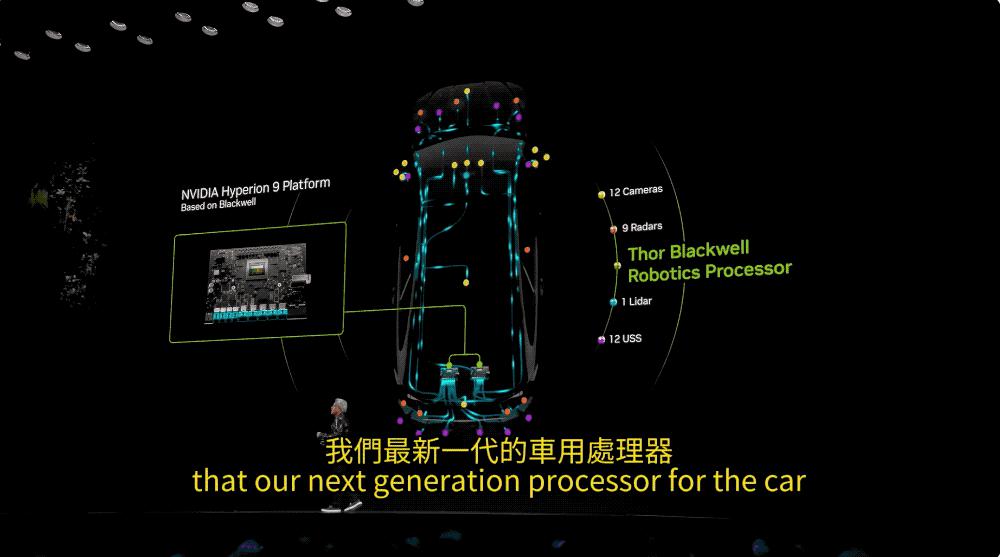
Image / NVIDIA Thor Chip Source / Internet Screenshot of New Energy View
In a typical travel scenario in 2030, vehicles autonomously plan routes while heading to the airport and detect passenger fatigue through brainwave sensors. When an abnormal heart rate is detected, the vehicle automatically adjusts the seat angle and releases sleep-aiding fragrances. Tests by the joint laboratory of Huawei and BAIC show that such spatial robot systems have an 89% accuracy rate in predicting sudden heart attacks.
The implementation of the "Vehicle-Road-Cloud" integrated architecture will reshape road ethics. Currently, over 7,000 kilometers of roads nationwide have undergone intelligent upgrades, and by 2030, major cities will have established digital twin transportation systems. Data from a test road section in Zhejiang shows that vehicles connected to the cloud control platform have a 76% reduction in accident rates during heavy rain, as roadside millimeter-wave radar can penetrate fog and detect obstacles hundreds of meters away, with data accuracy far surpassing that of individual vehicle sensors.

Image / Millimeter-wave radar working principle Source / Internet Screenshot by New Energy View
More noteworthy is the restructuring of the regulatory framework: the draft of the "Autonomous Driving Liability Determination Regulation" proposed by Shenzhen stipulates that in the event of an L4 level or above accident, the responsibility will be dynamically apportioned among car manufacturers, cloud platforms, and infrastructure operators. This compels the industry to establish a full-chain safety certification covering "chip-system-road."
The Reshaping of the Industry Landscape: From "Manufacturing Competition" to "Ecological Warfare"
The market elimination competition will be exceptionally fierce in five years. The China Association of Automobile Manufacturers predicts that by 2030, the domestic market will form a "6+N" pattern, where six giants with annual sales in the millions coexist with several niche brands. What determines life and death will no longer be production capacity scale, but the control over the energy ecosystem.
The survival of small and medium-sized enterprises lies in the deep cultivation of scenarios.
The successor to the Wuling Hongguang MINI EV will be transformed into a "mobile convenience store," with a rooftop drone capable of delivering fresh produce within 5 minutes in the community. The pure electric cargo ships along the Yangtze River are equipped with an automatic mooring system, and the daily solar power generation on the ship's body meets 80% of the power demand.

Image / Drone Business District Direct Delivery to Community Source / Internet New Energy View Screenshot
Cross-national competition is showing new trends. The European Union's carbon tariff policy is pushing Chinese car manufacturers to build zero-carbon factories in Serbia, utilizing wind energy from the Balkan Peninsula to produce batteries, which can reduce the tax on each exported vehicle by 34%.
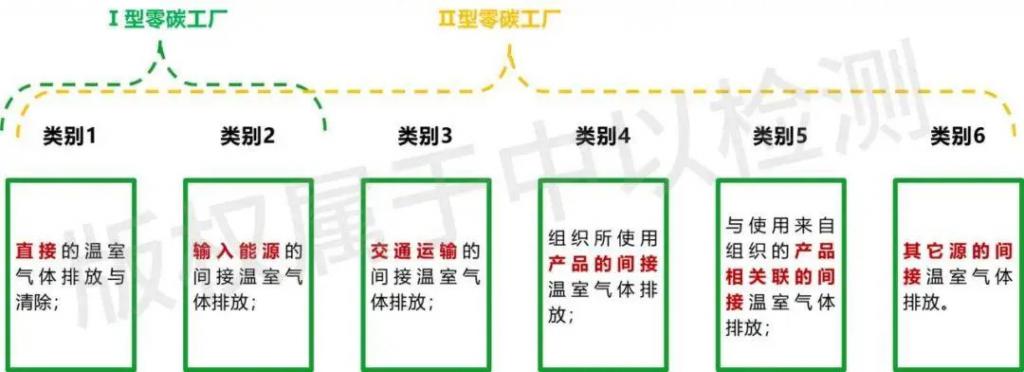
Image / Zero-carbon factory category Source / Internet Screenshot from New Energy View
Reconstruction of Social Ethics: From "Private Property" to "Public Intelligence"
As new energy vehicles evolve into highly intelligent mobile spaces, their social attributes will undergo fundamental changes. The role of vehicles will undergo profound changes, and this transformation is quietly reshaping our lifestyle.
In 2030, a new power brand launched a "community model" that allows users to authorize their vehicles during idle periods to be used by the community as mobile study rooms or remote medical points. The shared revenue generated offsets the monthly payments. In tests conducted in Xiong'an New Area, this model reduced household car ownership costs by 57%.

Image / The vehicle owner authorizes the community to use the vehicle as a mobile study room. Source / Internet New Energy Observation Screenshot
A more profound impact lies in the transformation of urban-rural relations. The "Micro Charging Pile" plan targeting third- and fourth-tier markets aims to renovate elevator power systems, increasing the coverage rate of charging facilities in old residential communities from less than 30% to 95%.
The explosive growth of the rural market is underway: A pilot project in Weifang, Shandong shows that mini electric vehicles priced around 30,000 RMB, combined with photovoltaic carports, reduce transportation costs for farmers to one-eighth of that of fuel vehicles. During the cherry harvest season, these vehicles form an autonomous driving transportation fleet, optimizing logistics routes through cloud-based scheduling.
6. A civilized carrier that transcends vehicles
Looking back from 2025, from the foundation laid by the 2015 "Energy-saving and New Energy Vehicle Industry Development Plan" to the end of June when the number of new energy vehicles reached 36.89 million, it took us ten years to achieve the popularization of electrification. Looking forward to 2035, new energy vehicles will evolve beyond mere modes of transportation—they will become the capillaries of the power grid, the nerve endings of cities, and the economic engines of rural areas.
【Copyright and Disclaimer】The above information is collected and organized by PlastMatch. The copyright belongs to the original author. This article is reprinted for the purpose of providing more information, and it does not imply that PlastMatch endorses the views expressed in the article or guarantees its accuracy. If there are any errors in the source attribution or if your legitimate rights have been infringed, please contact us, and we will promptly correct or remove the content. If other media, websites, or individuals use the aforementioned content, they must clearly indicate the original source and origin of the work and assume legal responsibility on their own.
Most Popular
-

At Least 44 Dead in Century-Old Fire! Questioning Hong Kong's Hong Fu Garden: Why Has the Path to Fire Resistance Taken 15 Years Without Progress?
-

Satellite chemical's profits surge! can the 26.6 billion yuan high-end new materials project meet expectations? a review of progress on four major projects
-

Key Players: The 10 Most Critical Publicly Listed Companies in Solid-State Battery Raw Materials
-

Estun Turns Profitable in 2025 Half-Year Report, Industrial Robot Shipments Rank First Among Domestic Brands
-

Avatr Files for IPO on HKEX, Plans to Complete Listing in Q2 2026






